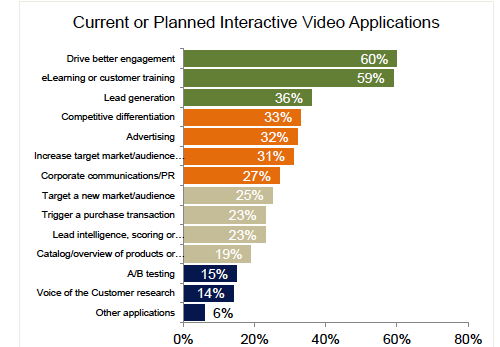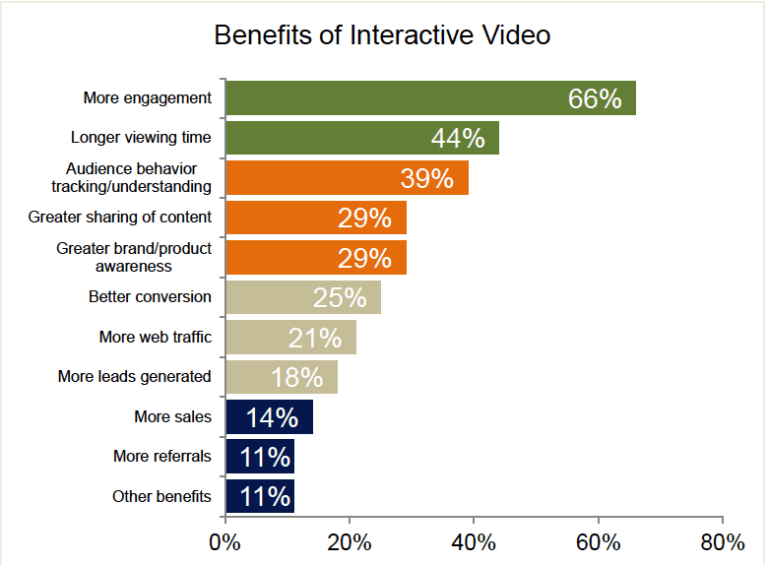
In a recent LinkedIn discussion of content marketing, a commenter noted that “there’s not a lot of demand” for interactive video marketing. That’s been my experience, too. Clients for our short videos get interested in call-to-action buttons, chapterizing long videos, even quizzes and branching, but they don’t follow up.
Why marketers don’t do interactive video marketing
In a recent survey of video providers. Demand Metric recently released a Brightcove-sponsored report on interactive video. Participants were Brightcove partners and customers, many of whom are large providers of video (broadcasters, publishers, big companies in healthcare, travel, etc.) In otherwords, a savvy survey sample. But, even among this crowd, a third of respondents asserted that their reasons for not using interactive video are:
- Don’t have the budget
- Don’t have the skills
- Don’t understand how it works
And 25% admitted that they don’t understand the benefits.
Of course, as the study points out, these are all good reasons for not undertaking just about any marketing initiative you could name.
On the other hand, 70% of respondents report being highly interested and motivated to do interactive video. Indeed, the average 2016 budget for interactive video in this group is reported to be in the $30,000-40,000 range. So something is happening.
Defining “interactive video”
I think the main reason for a lack of follow-through on interactive video is that term “interactive video” doesn’t mean much to most people. Many survey respondents thought that features like “clickable buttons” or “click within video” sufficiently define it. Others put the emphasis on paths and branching. But neither the term “interactive video” nor these attributes really capture why anyone should get excited about it.
Reasons to care
On the other hand, the attraction of interactive video (whatever you call it) is clearly evident in the chart depicting current and planned applications. All these applications seem like compelling reasons for making videos viewers can interact with. But only the first two — “better engagement” and “eLearning” were cited by more than 50% of respondents.

I think this gets to the heart of the problem: if we could drop the term “interactive video” in favor of a definition that includes a benefit such as engaging a customer, or even better, teaching someone something about our solution, there would be a lot more engagement with the subject.
Videos for engagement
Accordingly, we plan to stop telling our customers they should get interested in “interactive video” and start telling them how they can make more engaging videos than their competitors. This is a lot easier and cheaper than you might think. As noted in previous blog posts, you can include clickable items of interest in a video (on YouTube and elsewhere) for free. There are many other easy and inexpensive options. It does take work and imagination. It’s hard to imagine why it wouldn’t be worth a try.
Videos for eLearning
Few marketers probably think of themselves as being in the eLearning or customer teaching business. But that’s the direction sales engagement is headed these days. Prospects are trying to teach themselves about products and solutions before they engage with sales. So we also plan to talk to our clients about making videos that teach.
Other benefits of videos that engage and teach
 The study authors did a good job of listing the benefits of videos that engage and teach. It’s hard to think of a good reason to ignore any of these.
The study authors did a good job of listing the benefits of videos that engage and teach. It’s hard to think of a good reason to ignore any of these.



